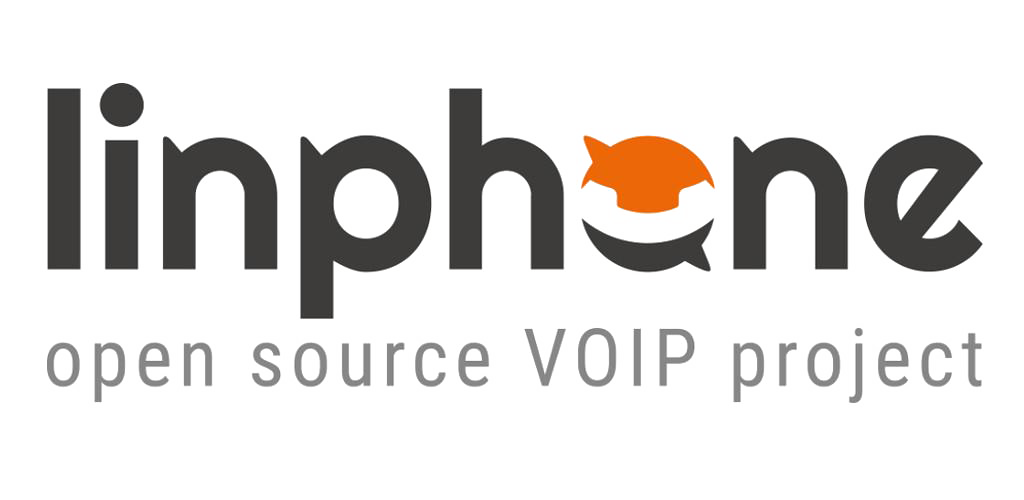How to Easily Integrate Softphone and Unified Communications into Your IP Telephony System with Linphone?

From Wired Telephony to Softphone: A Century of Evolution
Telephony has gone through several technological revolutions since its inception over 140 years ago. From analog systems and manual switchboards to early digital standards in the 1970s-1980s and the rise of the Internet in the 1990s, each step paved the way for the full virtualization of voice: VoIP (Voice over IP).
In the 2000s, pioneering projects like Linphone, the first open-source softphone based on the standard SIP protocol, opened the door to fully software-based communications. Since then, with the widespread adoption of smartphones and improved networks, the technical conditions have allowed the gradual replacement of physical equipment by reliable, simple, and secure software applications.
Why Migrate to Softphone?
The Covid-19 crisis profoundly changed how we work. The rise of remote work, mobility needs, and unified collaboration highlighted the limitations of traditional telephony systems, which are ill-suited to these new demands.
Softphone emerges as an ideal solution, enabling calls, chat, and video conferencing from any device (computer, smartphone, or tablet) using a single account accessible on all devices. Result: no need for physical SIP phones at each workstation, just one app is enough.
Beyond ease of use, softphone offers notable benefits. It reduces infrastructure costs by eliminating the need for dedicated hardware, integrates easily with existing systems thanks to interoperability, and promotes technological independence by relying on open-source solutions. Finally, it ensures a high level of security with features like end-to-end encryption, strong authentication, and access control.
Summary of Open Source Softphone Benefits
|
Challenges Faced During This Transition
Migrating to a 100% software-based solution is more than a tool change — it’s a structural transformation that involves several challenges:
1. Quality of Service on Non-Dedicated Networks
Unlike dedicated telephony networks, the Internet carries all kinds of traffic (streaming, downloads, etc.). To ensure optimal voice quality, the softphone must include:
- packet prioritization (QoS),
- codecs adapted to network conditions,
- error correction (FEC) and redundancy mechanisms.
2. Enhanced Security
When communications leave the company’s private network to transit over the public Internet, securing them becomes essential. Internally, telephony servers (PBX) often operate in controlled environments where encryption isn’t always applied. But once traffic traverses a public network, it must be protected to guarantee communication confidentiality.
Some softphones, like Linphone, maintain this security continuity by encrypting communications between the client’s VoIP infrastructure and the public Internet. This relies on several key mechanisms:
Traffic encryption: signaling uses SIP over TLS, while media (voice, video, chat) is protected via SRTP or ZRTP depending on the case.
Strong client/server authentication: only authorized users can access the service, via protocols such as SIP Digest authentication or SSO via OpenID Connect.
Combining these protections keeps communications secure even outside the company’s trusted perimeter.
3. Encouraging User Adoption
Changing communication tools can create resistance, especially due to fears of losing comfort or habits. Thus, it’s essential to provide a smooth transition phase, allowing users to keep existing SIP phones temporarily. Thanks to standardized protocols like SIP, it’s possible to connect a third-party softphone to an existing server without immediately replacing hardware infrastructure.
Beyond technical aspects, user support plays a key role in adoption. Implementing proofs of concept or pilot programs engages early adopters who become internal advocates. Training, technical support, user guides, and tutorials are all valuable resources to ease adoption for both end users and administrators. Finally, highlighting the tangible benefits of a well-integrated softphone — mobility, flexibility, improved user experience — helps drive acceptance.
4. Large-Scale Deployment and Management
Manually configuring 1,000 workstations is simply unfeasible. To deploy softphone solutions effectively at scale, suitable tools are essential: centralized account management, auto-configuration mechanisms, integration with enterprise directories (like LDAP), and a robust server architecture capable of handling heavy loads while ensuring high availability.
Example of a Progressive Deployment Plan Using Open Source Linphone and Flexisip to Successfully Transition to Softphone
Step 1: Deploy Linphone Softphone on Desktop with Auto-Configuration
The first step toward adopting software telephony is to provide users with the Linphone softphone installed directly on their workstations (desktop computers). Linphone allows users to configure their phone number in the app while remaining reachable on the existing physical SIP phone.
With call forwarding or simultaneous call forwarding features, each user can choose to receive calls only on the hardware phone, only on the softphone, or on both devices simultaneously. This flexibility offers a smooth transition, letting users gradually get comfortable with the new tool at their own pace.
To ease deployment, Linphone relies on a centralized account manager accessible via web interface or API. This system allows creating, configuring, and managing SIP accounts remotely without user intervention.
Softphone configuration becomes simple and fast: parameters (ID, password, server, codecs, etc.) are automatically sent to the app either via QR code scan or a link emailed to the user. This approach significantly simplifies Linphone softphone setup, even for less experienced users, reducing error risks.
Step 2: Connect to Traditional Telephony
Even after adopting VoIP for internal communications, it’s often necessary to stay connected to the traditional telephone network — meaning the ability to call regular phone numbers or be reached from outside via a standard number.
This requires a gateway between the internal SIP network (based on an IPPBX or Flexisip server) and the public telephone network (PSTN). This interconnection is done through a SIP trunk provided by an operator.
Linphone provides the software components needed to create this gateway, regardless of the operator chosen. The infrastructure remains open to the outside while keeping full control over the deployed solution.
Step 3: Add Mobility
Linphone is based on the standardized SIP protocol, widely adopted in IP telephony. This native compatibility guarantees interoperability with existing SIP servers in the organization, whether IPPBX, SIP proxy, or SBC. In other words, Linphone can be integrated seamlessly into existing infrastructure.
For organizations without a SIP server or with servers lacking features like essential mobile push notifications, an open-source server suite is available: Flexisip. This open-source SIP server, deployable on-premises or SaaS, offers flexible, scalable internal communications management.
Installing the Linphone mobile app on Android or iOS provides full mobility. Thanks to push notifications, calls and messages are received in real time, even when the app is closed or the phone is asleep. This service continuity is ideal for field teams, keeping them reachable at all times while benefiting from VoIP’s cost savings compared to traditional telephony.
Furthermore, Linphone on mobile mimics the native phone experience, with inbound and outbound calls directly from the smartphone and all VoIP features including video — often missing or expensive on hardware SIP phones.
However, mobility means exposure to potentially unsecured public networks. To ensure confidentiality and reliability of communications outside the local network, integrating a secure gateway like the one offered by Flexisip remains essential.
Step 4: Unified Communication
Bringing all communication tools together on a unified platform simplifies daily management: fewer solutions to administer, fewer providers to monitor. This way, teams become more efficient and IT departments benefit from greater simplicity.
With the conference server integrated into Linphone, it is easy to enhance the solution with features such as instant messaging, group calls, and video conferencing, without relying on third-party tools.
Conclusion: A Controlled Change
Migrating to softphone technology is not just a tool change; it is a step towards modern, flexible telephony. Thanks to solutions like Linphone and Flexisip, it is possible to ensure a gradual, secure, and scalable transition to a fully software-based infrastructure.
Open source now offers the same performance as proprietary solutions, with full control over your data and transparent costs. Belledonne Communications supports you at every stage of the transformation, from initial consulting to full technical integration.
Resources to Learn More |


